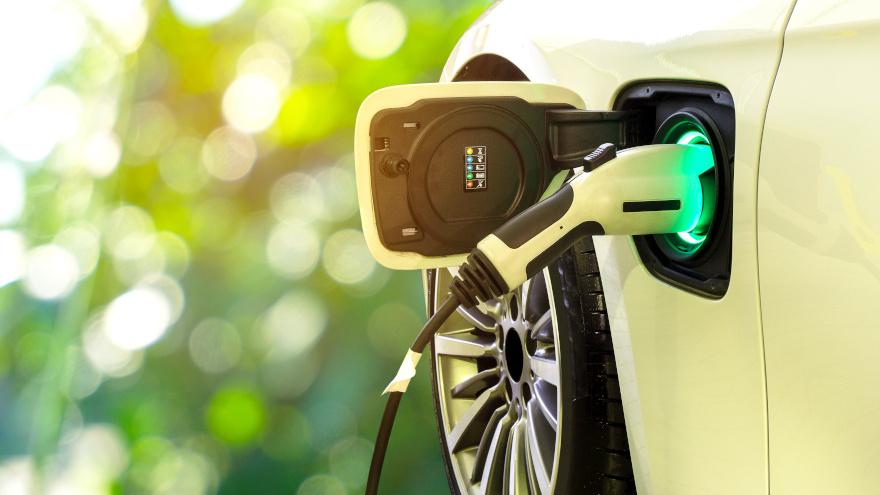Hybrids, electrics lead list of fastest-selling used vehicles

The cost of gasoline is up nearly 59% from a year ago, so the models topping the iSeeCars.com list of fastest-selling used vehicles makes perfect sense.
A combined nine hybrids and electrics cracked the top 20 list for November. Seven of the nine — and each of the top four — fastest-selling used vehicles last month were either hybrids or electrics, according to the iSeeCars analysis.
At the top of the rankings was the Honda Clarity plug-in hybrid, which took 22.2 days-to-sell. The average used-car turn time for the industry was 51.5 days.
Other hybrids to make the list were the Chrysler Pacifica Hybrid in third, with a turn time of 26.5 days, BMW i3 (fourth, 28.6 days), Toyota Prius (No. 6, 29.4 days), Hyundai Ioniq Hybrid (No 9, 32.9 days), Toyota RAV4 Hybrid (No. 16, 37.6 days) and the Kia Niro (No. 17, 37.6 days).
The Nissan LEAF, an electric vehicle, was No. 2 with a turn time of 23.3 days. Fellow electric Tesla Model 3 came in eighth, with a turn time of 32.6 days.
The used-car data from iSeeCars is based on an analysis of 1- to 5-year-old used vehicles.
“The Honda Clarity debuted in 2018, while the Honda Insight debuted in 2021, which means most used versions are just now becoming available and are in high demand,” iSeeCars executive analyst Karl Brauer said in a release. “Just as in the new car marketplace, hybrid and plug-in vehicles are hot sellers as fuel prices have increased by 58.7 percent in November compared to last year.”
Regarding the two EVs on the list, Brauer added: “A new version of the Model 3’s Standard Range Plus variant isn’t expected until June 2022, which further elevates the demand for used versions, some of which are being sold at higher prices than new versions.
“The Nissan LEAF, which usually isn’t in high demand on the used-car marketplace due to its limited range and high depreciation, has seen a surge in popularity that made it the used car with the highest price increase in November.”
It should be noted chat the Model 3 topped the iSeeCars used-car list for four straight months (June-September), and Brauer said, “it has been in high demand since it became available on the used car marketplace, with demand intensifying further in recent months in reaction high gas prices.”
Industry-wide, November had the slowest used-car turn time of the year (51.5 days to sell).
Peak speed was reached in September, when the average used car took less than 35 days to sell, according to the iSeeCars data.
“Used cars steadily took less and less time to sell from the beginning of the year until October, when they drastically took more time to sell likely as a result of elevated prices,” said Brauer. “New cars followed a similar pattern from the beginning of the year through May, but their days on market quickly accelerated through September, after which they slowed down back to mid-year levels. The faster-selling months coincided with reduced inventory amid the height of production shutdowns.”
Used-car prices at highest point last month
November also had the most expensive used cars, with pre-owned prices approaching $33,000.
“The average price for new cars has grown steadily, at a rate of about $534 a month because of manufacturers prioritizing the production of more expensive and profitable cars and as dealers have marked up cars over MSRP,” said Brauer. “Prices of used cars grew at an even higher rate of $638 a month and are the highest they have been all year. Limited inventory in the new car market has heightened demand and elevated prices for used cars.”
And that doesn’t appear to have slowed in December.
In a Market Insights report released Tuesday, Black Book said its retail listing price index has climbed approximately 35% since the beginning of the year.
“During the third quarter, retail prices continued to rise at a slower rate but have since picked up,” Black Book said. “In Q4, prices on retail listings have steadily increased week after week and the retail listing price index now sits at around 35% above where we started the year. The scarcity of both new and used inventory in the market fuels these consistent increases.”
Meantime, the inventory of retail used cars listed has been approximately 16% softer than early 2021 levels, as of late. And usually, the amount of listings rises “dramatically” this time of year, as it did in 2019 and 2020, Black Book said.
“New inventory is slowly making its way to market, but not at the levels needed to boost used retail listings to the ‘normal’ level,” the company said.
Black Book's data is based on 2- to 6-year-old vehicles.

 View The Latest Edition
View The Latest Edition

